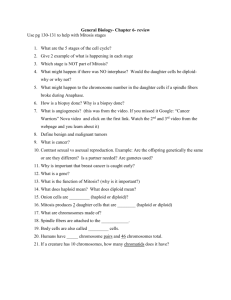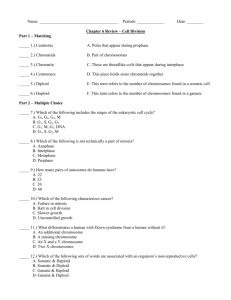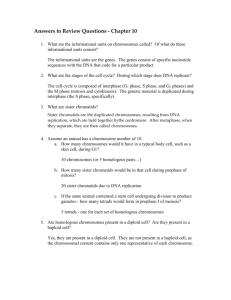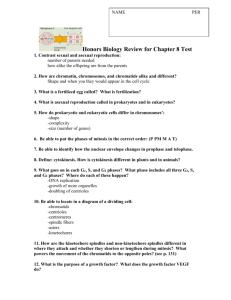Slide 1
advertisement
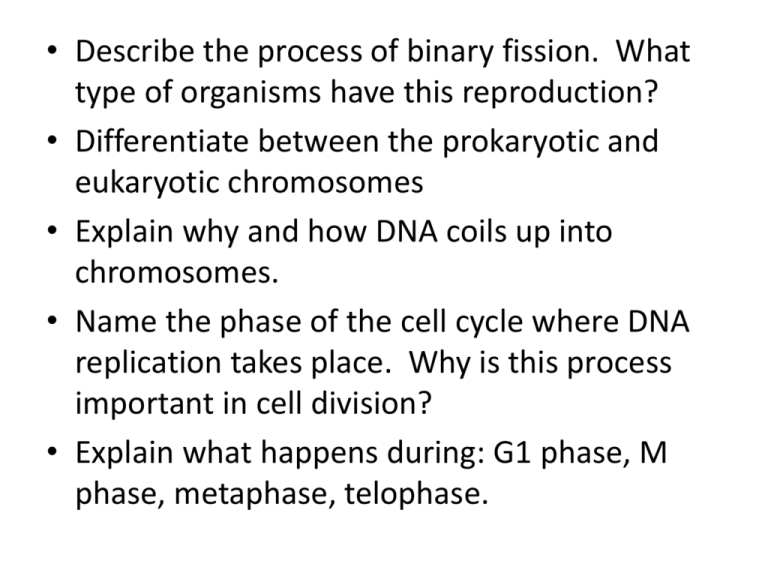
• Describe the process of binary fission. What type of organisms have this reproduction? • Differentiate between the prokaryotic and eukaryotic chromosomes • Explain why and how DNA coils up into chromosomes. • Name the phase of the cell cycle where DNA replication takes place. Why is this process important in cell division? • Explain what happens during: G1 phase, M phase, metaphase, telophase. • List the phases of mitosis and the main purpose of this process • Identify the stages of mitosis on the following cells: • List all learned external regulators of the cell cycle. • List all internal regulators of the cell cycle. • What is the role of checkpoints in the cell cycle? • What happens when the cell regulation of the cell cycle does not work properly? • Name the stages of mitosis: Determine the shape and number of chromosomes and the number of chromatids if the chromosome number of the species is 56 • In G1 • G2 • S (end) • Prophase • Metaphase • Anaphase • During cytokinesis in each nucleus • What are the characteristics of cancer cells? • List the stages of cancer • Differentiate between benign and malignant tumors. • Describe what the main purpose of mitosis and cytokinesis is. • What type and how many daughter cells are produced by mitosis? • Differentiate between haploid and diploid cells. • Define what homologous chromosomes are • Name cells in your body that would be haploid • Name cells in your body that would be diploid. • List three internal regulators of the cell cycle. Describe them. • Describe what happens if the cell cycle regulation fails. • Name three characteristics of cancer cells. Determine the number of chromosomes/chromatids if the diploid chromosome number is 20 • Number of chromatids in a diploid cell during G2 • Number of chromatids in a diploid cell during G1 • Number of chromosomes in a haploid cell • Number of chromatids in a haploid cell after S phase • Number of chromatids in a haploid cell after mitosis • Number of chromosomes in a diploid cell after mitosis. • Number of chromatids in a diploid cell during prophase (beginning of mitosis) • Number of chromatids in a haploid cell during prophase
